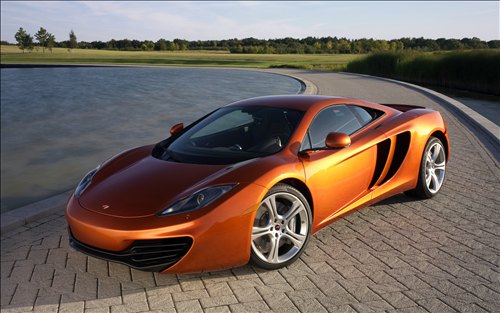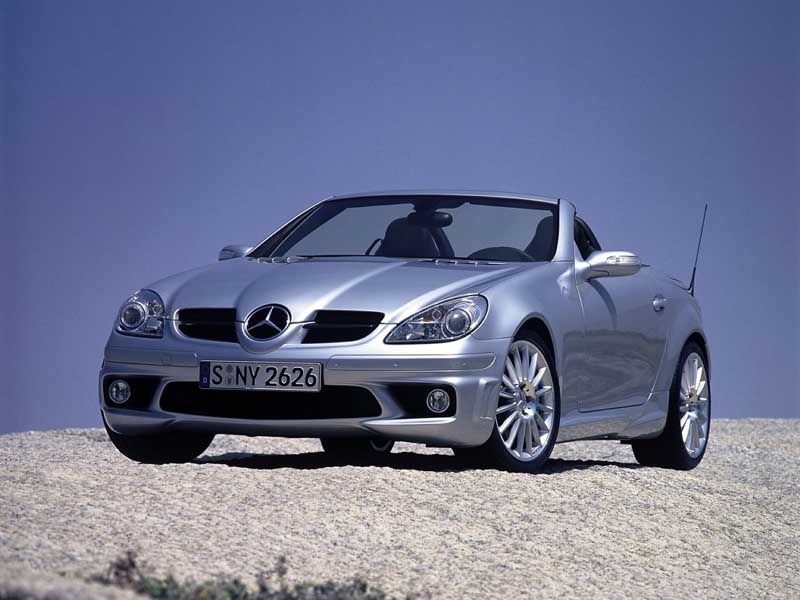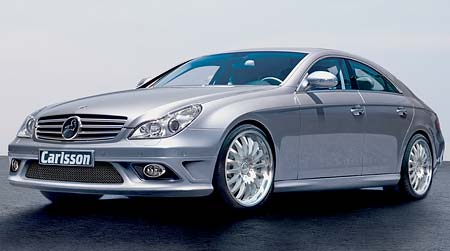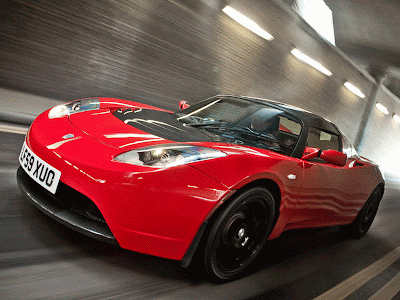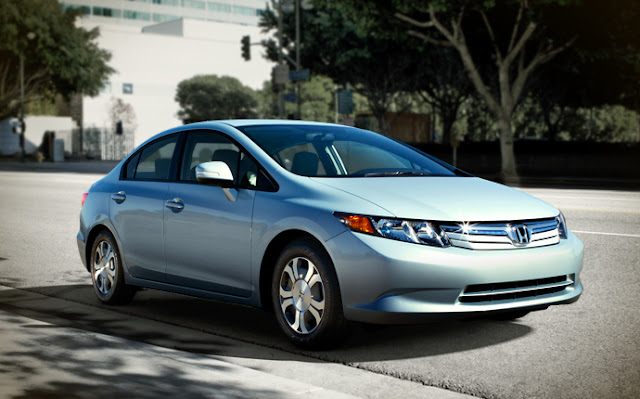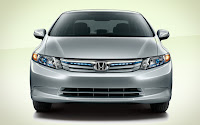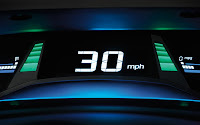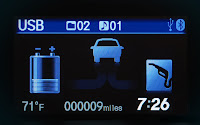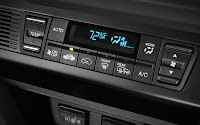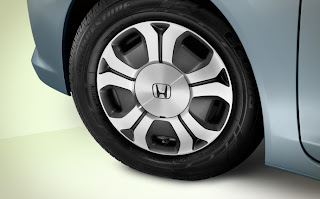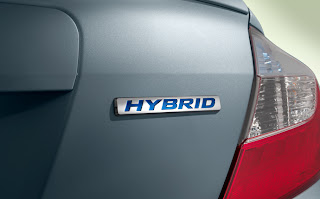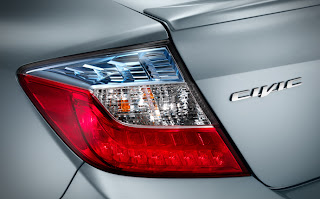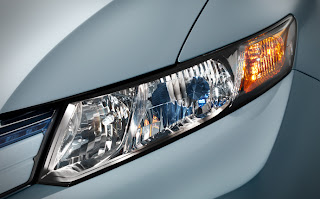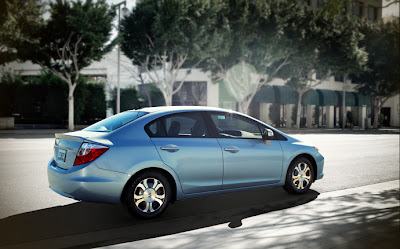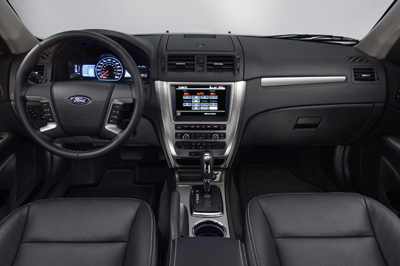The Honda Civic Hybrid is a hybrid powertrain version of the Honda Civic, first introduced in Japan near the end of 2001. It comes with either a continuously variable automatic transmission or (until 2005) a 5-speed manual transmission. It uses an Integrated Motor Assist hybrid system similar to Honda Insight. The Civic Hybrid is only available as sedan, even in Europe until 2012, where it is replaced by its hatchback version.
The Civic hybrid was introduced to the U.S. in spring 2002 as a 2003 model, based on the seventh generation Civic. As with the conventional Civic, it received a styling update for 2004. It is the first hybrid vehicle to be certified as an Advanced Technology Partial Zero- Emissions Vehicle (AT-PZEV) from California's Air Resources Board. The second generation Civic Hybrid is based on the eighth generation Civic, with some styling differences between the U.S. market and Japanese market models. The Civic hybrid ranks as the second best selling electric hybrid car in the U.S. As of the end of January 2009, the total global sales of all Civic hybrid exceeded 255,000.
Honda produces an exciting new vehicle into the collection, the brand new 2012 Honda Civic Hybrid. Honda has utilized the most up-to-date version of Integrated Motor Assist hybrid drive train into the car. In America, the 2012 hybrid civic has greater EPA-estimated gas mileage compare to any kind of sedan. The gas mileage for highway, city, as well as combined is 44 miles per gallon.
The styling of its front lights, front grill, taillights, rims, and also mirrors have been completely improved to give a much better sleek look to the car. The seats are layered with either leather or cloth and navigation system can be integrated into the Civic Hybrid.
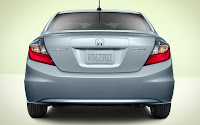
The Honda Civic utilizes 1.5 liter V-TEC 4-cylinder engine in 2012 model and even comes with friction reducing systems as a way to have a better performance. The electric motor is lighter and capable of delivering up to 23 hp and 110 hp when used in combination. When accelerating, either the electric and the motor or just the engine to give power to the vehicle. Moreover, either engine can propel the car while cruising. When the driver hit the brakes, the gasoline engine will stop functioning and be replaced instead by electric engine which also behaves as a generator to produce power to the battery. And the moment the driver starts to speed up, the gasoline engine will be activated to deliver additional power.
Basic version and optional features are offered to add a lot more top quality look to the interior of Civic Hybrid. In the driver's line of sight, the interior has the most frequently referenced info. Information such as album artwork or personal wallpaper backgrounds are displayed by the new Intelligent Multi Information Display on the upper tier And also, the driver is able to collect suggestions on how the driver drives and how it affects fuel consumption by the assist of Eco Guide screen on the upper tier. In an effort to help increase driver's awareness for fuel efficient driving, the speedometer is loaded with blue/green Eco Assist indicators. For head unit, the standard of Civic Hybrid is built with 160 watt AM/FM/CD with 6 speakers. XM Radio will be available when you include the navigation system. This is not just a regular navigation system, but 6.5 inch touchscreen, voice recognition enabled which is linked to Honda's own sat nav system. For a better response time, the navigation system is made with 16 GB flash memory and also includes FM traffic. For additional safety, the driver will be able to receive calls without any difficulty as a result of bluetooth Hands FreeLink function. Besides that, in case you have compatible devices, it even supports video streaming.
In choosing a vehicle, safety must come first. This is exactly why The Civic Hybrid includes a pile of safety features such as motion adaptive EPS system, brake assist, ABS with electronic brake distribution, side curtain airbags, front side airbags, and also dual stage, multiple threshold front airbags.
The Civic hybrid was introduced to the U.S. in spring 2002 as a 2003 model, based on the seventh generation Civic. As with the conventional Civic, it received a styling update for 2004. It is the first hybrid vehicle to be certified as an Advanced Technology Partial Zero- Emissions Vehicle (AT-PZEV) from California's Air Resources Board. The second generation Civic Hybrid is based on the eighth generation Civic, with some styling differences between the U.S. market and Japanese market models. The Civic hybrid ranks as the second best selling electric hybrid car in the U.S. As of the end of January 2009, the total global sales of all Civic hybrid exceeded 255,000.
2012 Honda Civic Hybrid
Honda produces an exciting new vehicle into the collection, the brand new 2012 Honda Civic Hybrid. Honda has utilized the most up-to-date version of Integrated Motor Assist hybrid drive train into the car. In America, the 2012 hybrid civic has greater EPA-estimated gas mileage compare to any kind of sedan. The gas mileage for highway, city, as well as combined is 44 miles per gallon.
The styling of its front lights, front grill, taillights, rims, and also mirrors have been completely improved to give a much better sleek look to the car. The seats are layered with either leather or cloth and navigation system can be integrated into the Civic Hybrid.

The Honda Civic utilizes 1.5 liter V-TEC 4-cylinder engine in 2012 model and even comes with friction reducing systems as a way to have a better performance. The electric motor is lighter and capable of delivering up to 23 hp and 110 hp when used in combination. When accelerating, either the electric and the motor or just the engine to give power to the vehicle. Moreover, either engine can propel the car while cruising. When the driver hit the brakes, the gasoline engine will stop functioning and be replaced instead by electric engine which also behaves as a generator to produce power to the battery. And the moment the driver starts to speed up, the gasoline engine will be activated to deliver additional power.
Basic version and optional features are offered to add a lot more top quality look to the interior of Civic Hybrid. In the driver's line of sight, the interior has the most frequently referenced info. Information such as album artwork or personal wallpaper backgrounds are displayed by the new Intelligent Multi Information Display on the upper tier And also, the driver is able to collect suggestions on how the driver drives and how it affects fuel consumption by the assist of Eco Guide screen on the upper tier. In an effort to help increase driver's awareness for fuel efficient driving, the speedometer is loaded with blue/green Eco Assist indicators. For head unit, the standard of Civic Hybrid is built with 160 watt AM/FM/CD with 6 speakers. XM Radio will be available when you include the navigation system. This is not just a regular navigation system, but 6.5 inch touchscreen, voice recognition enabled which is linked to Honda's own sat nav system. For a better response time, the navigation system is made with 16 GB flash memory and also includes FM traffic. For additional safety, the driver will be able to receive calls without any difficulty as a result of bluetooth Hands FreeLink function. Besides that, in case you have compatible devices, it even supports video streaming.
In choosing a vehicle, safety must come first. This is exactly why The Civic Hybrid includes a pile of safety features such as motion adaptive EPS system, brake assist, ABS with electronic brake distribution, side curtain airbags, front side airbags, and also dual stage, multiple threshold front airbags.

